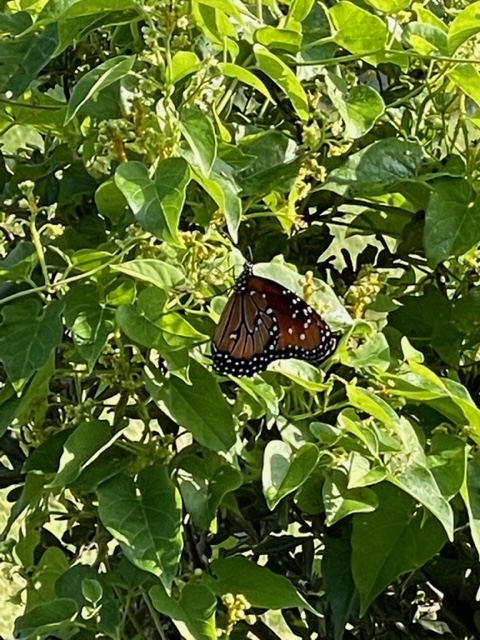Talayote Vine (Cynanchum racemosum)


The View From Federal Twist: A New Way of Thinking About Gardens, Nature and Ourselves by James Golden comes out in March. Golden and his partner bought an older home with vast gardens in New Jersey. He follows the “Don’t fight the site” mantra. When you create a formal garden, you are exerting control over the site. I did this with my last home in San Antonio. But his concept is to accept the land and start with a clean slate. This is what I am attempting now with my new home. I have created Stone House Gardens with a high percentage of native plants.
I have taken the approach of letting the land speak to me. I see what plants pop up before digging and pitching unknown plants as well as noting what native plants survive deer grazing and cold temperatures in Horseshoe Bay. Golden suggests watching your dog (in my case deer) to see where they make a path since they understand the terrain. In taking this approach, native plants have popped up everywhere. Then I make the decision to edit or not.
This is exactly what happened with the talayote vine. At least eight of them volunteered last year covering a small group of young black persimmon (Diospyros texana). The vine is in Apocynacea family (dogbane). At some point in time, milkweeds were used as dog poison. Apocynum means “dog away” in Greek. Many species in this family are poisonous if ingested due to the milky, latex sap in the leaves and stems. (We all know about the orange warning color of the monarch (Danaus plexippus) and the queen butterfly (Danaus gilippus) which their caterpillars get from ingesting this sap. This sap sequesters toxic cardiac glycosides. The flowers and nectar don’t contain the sap and are safe for bees, flies, and butterflies.
While books say the vines can grow up to 15’, mine are only 8’-10’ wrapping around the tops of my persimmons. The beautiful green, heart-shaped leaves are opposite each other on the stem nodes with spaces between each set. The flowers are 10 to a raceme and are greenish white to cream colored. The stigma and anthers are fused together making them bisexual (hermaphrodite or androgynous). They are able to self or cross pollinate which produces offspring genetically identical to the parent.
The fruits produce large, plump seed pods from September until the end of November. The pods will turn brown and crack when dry. The flat seeds have long, white hairs that serve as parachutes to disperse in the wind. I keep the seeds in a paper bag until completely dry, then store in the freezer for better germination.
Large milkweed bugs (Onocepltus faciatus) deposit eggs into the pods through small cracks. Their babies will eat holes in the seeds. These bugs have two black triangles at each end of their bodies with a black band at their middle. This is called aposematic coloration. It is the concept of “warning coloration” to prevent attacks from predators using high contrast patterns such stripes or bands. Their cousins, the small milkweed buds (Lygacus kalmii), eat sap and nectar from the flowers.
Why keep this vine that has so many damaging insects? It attracts many beneficial insects such as lady beetles, lacewings, bees, and damselflies. The honeydew left behind by the aphids attracts ants, wasps, and other sugar loving insects. Maybe one day you’ll be lucky and have some pop up in your garden!

